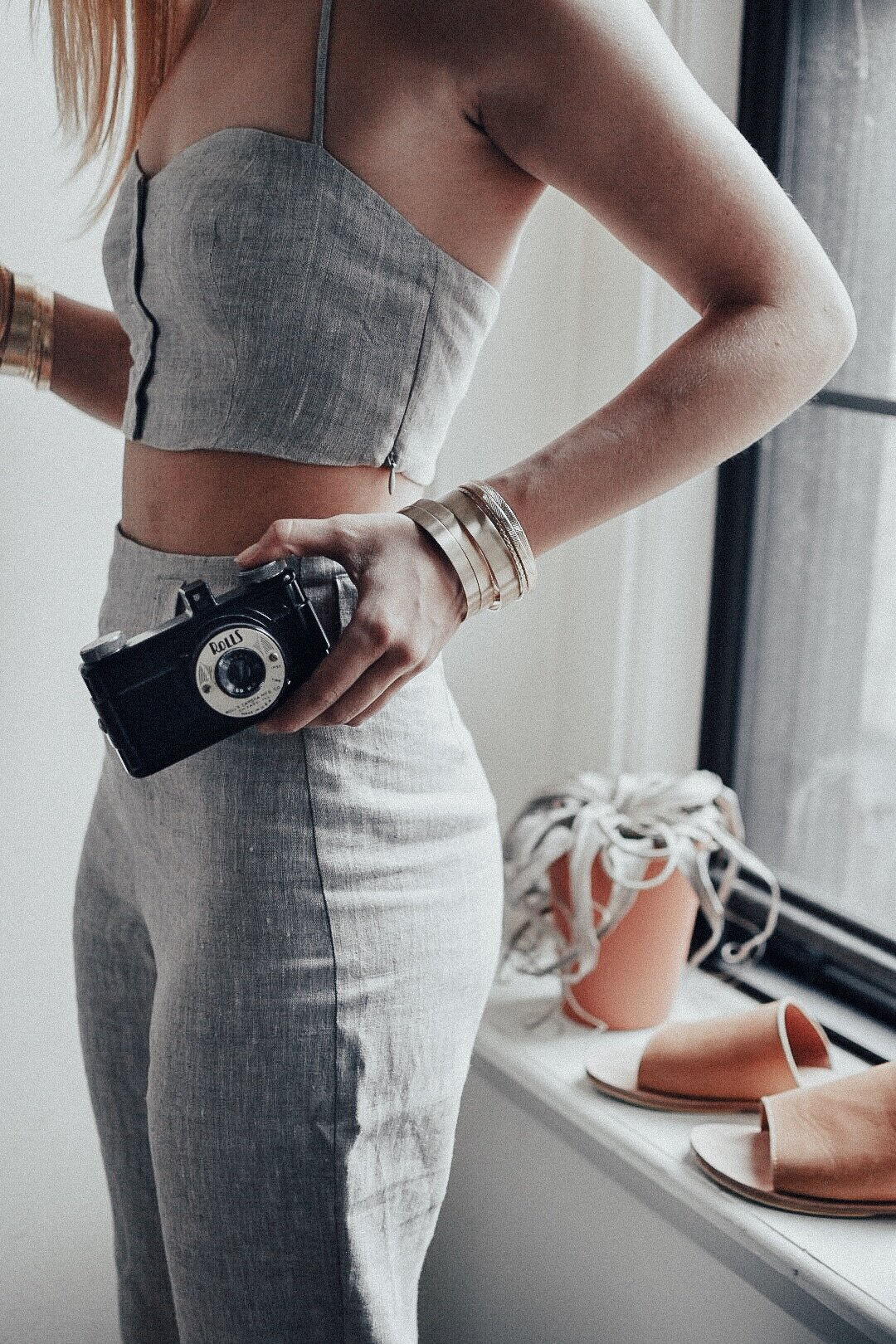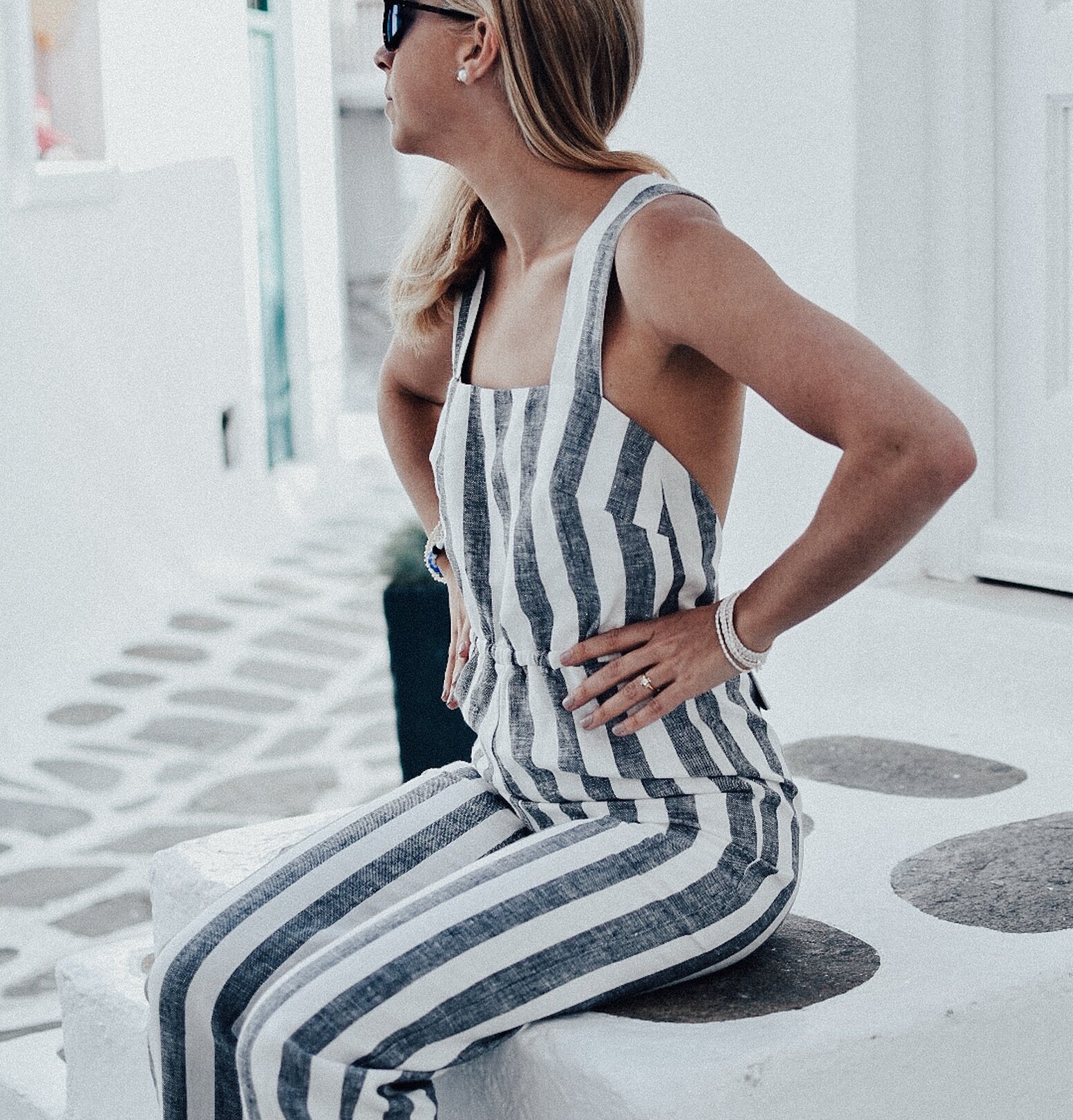
5 Strategies For An Ethical Capsule Wardrobe Abroad
Paring Down & Setting Off On A Global Adventure
A little over a year ago, I began life as a full-time blogger. My boyfriend, Porter, and I loved running our blog, Recess City, keeping up with Instagram accounts whose photographic style inspired us, and pouring ourselves into this new, exciting, daunting, limitless field. But there was a pea embedded deep down in our mattress pile, and though we didn’t yet know where it was, we could feel it and the restlessness and dissatisfaction it brought along.
“We realized that by constantly sharing new outfits on our social media platforms, we were subconsciously reinforcing the idea that excess adds value, a notion that runs directly contrary to our belief system.”
It took a little while for us to define exactly what was wrong, but when we did, it became evident that it was no small thing: Like the large majority of style bloggers, we realized that by constantly sharing new outfits on our social media platforms, we were subconsciously reinforcing the idea that excess adds value, a notion that runs directly contrary to our belief system. Recognizing our own involvement in raising the volume on that consumerist mantra was a major wake up call, and drove us straight to the front gate of that big, towering six-letter word: change.
Fashion With Purpose
We decided it was time to give up a little, time to clean out our overstuffed closets and drawers and cupboards, and time to read more deeply into the fashion-with-purpose movement. It was time to sketch out exactly what Mattered, capital M, and draw the lines between what we wanted to do: run a successful lifestyle blog, and what we wanted to say: that there are endless opportunities to do and feel good in the small ways of what you wear and how you act and the life you create.
So in just a few months, we’re setting off on an indefinite journey around the world, equipped with an ethical capsule wardrobe made up of brands we badly wanted to see succeed, while chronicling the kind of nomadic lifestyle we’d formerly hoped to experience in that hazy, borderland “someday.” And though people lean on the phrase “we’re leaving everything behind” it feels just the opposite of that; everything that matters will be with us.
We hope to show that ethical style can be fluidly incorporated into your wardrobe without it having to replace every other item, and without it being accompanied by what some would view as the life-altering decision to never purchase an unethical item again. Though this outcome would be fantastic, we don’t think it’s realistic and have often found it belittling when ethical sites shame consumers into feeling tremendous guilt if they ever so much as look at Zara again.
“We’re just trying to plant a seed, to have people who would’ve never considered where their clothes were manufactured start considering it, to show that having less of the material things doesn’t actually correlate with a less fulfilling, successful, meaning-driven kind of life.”
Strategies For Creating Your Capsule Wardrobe
We’re not out to guilt-trip; we’re not even striving to have our audience make the full-blown shift to all-ethical. We’re just trying to plant a seed, to have people who would’ve never considered where their clothes were manufactured start considering it, to show that having less of the material things doesn’t actually correlate with a less fulfilling, successful, meaning-driven kind of life. If we were to break it down into five lessons we hope our readers will glean, it would be this:
1. Knowing where your clothes are made is empowering.
Getting into the habit of checking labels, understanding what certain “made-ins” denote about the labor conditions and quality of life of the workers who constructed the piece your holding, (possibly just weeks before it reached your hands!) is an awesome way to increase your awareness of just how often retailers sacrifice their workers’ conditions for a dirt-cheap price.
2. Having less clothing can actually mean having more immaterial things.
Mark Zuckerberg wears the exact same outfit every day so that he can focus completely on thinking about creative projects. We’re not suggesting everyone follow that model, but there is something to be said about a smaller wardrobe leading to more time and energy. If you can think even just a little less about what you’re going to wear or buy, bottom line is you’ll have more energy and focus and time to pursue other passions.
3. Invest in a wardrobe you love for the greatest possible return.
If you own Sweater A and Sweater B, and like them both a lot, but, given the option, always reach for Sweater A, you don’t need Sweater B. Investing only in items you’ll always reach for is incredibly important. If you aren’t buying clothes for just a single event, but are truly looking at your wardrobe as an investment equivalently beneficial as your diet or exercise regimen, it will be of a higher quality, last longer, and you’ll love every item a whole lot more.
4. Talking about where our clothes come from should be as common as talking about where our food comes from.
In this day and age organic produce is all the rage, but so are labels like “cage-free” and “grass-fed.” If we take the quality of life of animals providing us with food seriously, than we should definitely take the quality of life of people providing us with clothing seriously. Both are basic necessities, both processes deserve our empathy. Ask your all-organic friends if they know what kinds of labor conditions their yoga tank was made under, or start up a conversation about why that cage-free eggs label makes you feel good about the product you’re buying, but “sweatshop-free” labels have yet to grace even a small percentage of T-shirt tags. Don’t just contemplate things, talk about them.
5. There’s more to a good piece of clothing than just style.
We know that a really good summer strawberry is good because pesticides weren’t used, the environment provided just enough sunshine, and the farmer was meticulous about plucking the best looking ones and getting them to the farm-stand fast. But when it comes to clothes we tend to think about one thing only: how they look. Sour apples don’t appear all that different from Gala’s on the outside, but one bite and you know they are not the same. Consider unethical clothing the sour apples of the fashion industry. Try to keep design from overruling the importance of all-around goodness. Get into the habit of realizing that even if an item looks amazing on you, it isn’t entirely about you. Just like you can trace the strawberry back to the farmer, that purchase ties you to the way it was produced.
“How was this dyed and sewn and delivered, and, most importantly, how can my decisions on what to wear and buy be more informed, eco-conscious, empathetic to others, and reflective of what I know to be right and wrong? ”
A Shift From Where to How
People might be following along with our global adventure, and think we’re entirely focused on where we are and where we’re headed next and where we’re coming from, but it’s our goal and intention to allow that focus on “where” to work at the surface only; to distract them from a different subconscious focus we hope to awaken overtime: a focus on how. How was my clothing made? How did this T-shirt get from the cotton farm to the manufacturer to me? How was this dyed and sewn and delivered, and, most importantly, how can my decisions on what to wear and buy be more informed, eco-conscious, empathetic to others, and reflective of what I know to be right and wrong? Without those “wheres” I don’t think we’d be able to tap into those “hows”, but with them, maybe we will be.
Read more about Anna Lisa & Porter’s global adventure on their blog.





